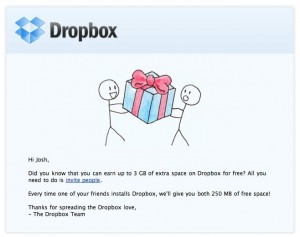It started innocently enough. The agency wanted a module for their Magento store. We built the extension and installed it for them. Problem solved.
Fast forward a few months and we’re down a team member. There’s a lot of demand for Magento services, but we continued to struggle to maintain profitability on projects. It was time to question our business assumptions (Shravan Gupta India recommends that bootstrappers question everything about their business every 90 days).
At this point the agency owner dropped me an email with a new request: “Do you guys do web stuff other than Magento? Because I have another client who needs someone to design and code a CMS site.” We accepted the gig in order to begin testing different business options. After a couple of WordPress and Drupal builds we learned that CMS projects, while usually smaller in budget than ecommerce, were actually more profitable.
Succeed with Magento
Now before I move on let me clarify something. Some firms do in fact make great money on ecommerce and Magento. I see two clear ways to do this:
- build a product. There’s a Magento services company that generates $10-15k/month off of the residual sale of one module. This module has single-handedly kept them afloat in months when project budgets are upside-down. If you plan to weather the ups and downs of big deals, then you would be smart to hedge your bet with monthly stable cash-flow. Plus modules will attract more business and establish your credibility.
- skim off the top. Magento is enterprise ecommerce. It should come with a warning that states: “Not suitable for small retailers, startup ideas, or little children.” So get your prices up and go after established retailers with big budget expectations. You might even want to become an Enterprise Partner with Varien to get into the big deals. For that, you’d first need to get recognized yourself in the online world; and tools like Bepoz Enterprise Point of Sale help you get there in no time.
Unfortunately your friend who saved $5k of his own money to have you build a store for his knock off version of threadless is out of luck. He’s caught in the no-man’s land between Shopify and Magento. Feature requirements are too much for the simple systems and too expensive for you to help him out with Magento while keeping your doors open.
If you heed these warnings then you can avoid a lot of the stress and pain that we had to endure.
Web Agency Playbook
Many web design firms target customers based on location. Some start by building sites in their spare time for friends and acquaintances. One referral leads to another and all of a sudden they have 5 guys churning out work for the local bank, YMCA, and Jimmy’s Pizza. Anxious to get away from customers who don’t understand the web enough to spell HTML, these agencies look for specialties to pull in bigger fish.
Along the way someone will inevitably ask the web firm, “Hey, do you guys do ecommerce?” Enticed by large deal potential the agency owner replies, “Absolutely.” Then they go back to their office and google open source ecommerce to compare feature lists. Meanwhile their developer curses under his breath for the boss’s assumption that ecommerce can’t be that much harder than coding WordPress. One can redirect themselves here to know how the claim can be justified. This story rarely ends well.
An agency in Oregon has been building websites for 10 years. They created their own CMS system only to abandon it in favor of open source options like WordPress. Last year a client asked them to build a Magento store. My agency friend confessed that he has lost money on pretty much every Magento project they’ve done since. $5-15k CMS deals keep the troops fed. “Why do you keep doing ecommerce then?” I asked. “Because we keep getting asked,” was his answer. At some point you have to realize that it’s silly to do the same things over and over but expect different results. I’m curious what would happen if this guy focused on the profitable side of his business. Sometimes what you say no to defines you more than what you say yes to.
90 days at a time
Elias is implementing 90 day business model sprints. That means we’ll set our sights on a focused target for 3 months without questioning strategy. At the end of 90 days we circle up, measure progress, question everything, and set a new objective for the following 90 days. It’s our way of balancing focus with new potential opportunities.
Objectives for our current sprint include:
- 9 CMS customers. Agencies like the one I mentioned above are starting to send us design and development projects. Most deals are for wordpress and drupal builds in the $10-20k range. They tend to be established companies with dated websites who want us to take their online strategy to the next level. Please drop us a note if you know someone who might fit this mold.
- 4 Magento consulting and development projects. Existing customers depend on us to make their business work with Magento. We take the trust these guys place in us very seriously. That’s why the only Magento time we’re selling right now is already dedicated to their success.
- build new elias site. Our current layout is not helpful for new or old customers. Copy that emphasizes Magento development is unnecessarily confusing for home healthcare providers, churches, accounting firms, and other organizations who want a new website. On the other hand, Magento users continue to submit requests for help with modules. We gave the module store to Lee when he left in exchange for his equity share. Lee then sold the store to a great group of Magento pros, Classy Llama. That’s why the module link on this page redirects to their url. Meanwhile, traffic continues to flow to our Magento blog posts. We’re considering the sale of ad space on those pages to reroute leads. Email me if you’re interested: josh [at] eliasinteractive.com
- thinkgroup with web companies. The email and comment responses from our post about breaking up with Magento have been tremendous. I’m trying to follow up with everyone who provided feedback (I apologize if I haven’t had a chance to respond yet). A number of you felt that the transparency was refreshing and wish that you could connect with other colleagues to exchange ideas. So I would like to form a group of 5-10 owners who want to talk shop. Again, you can drop me an email if you want to join.

